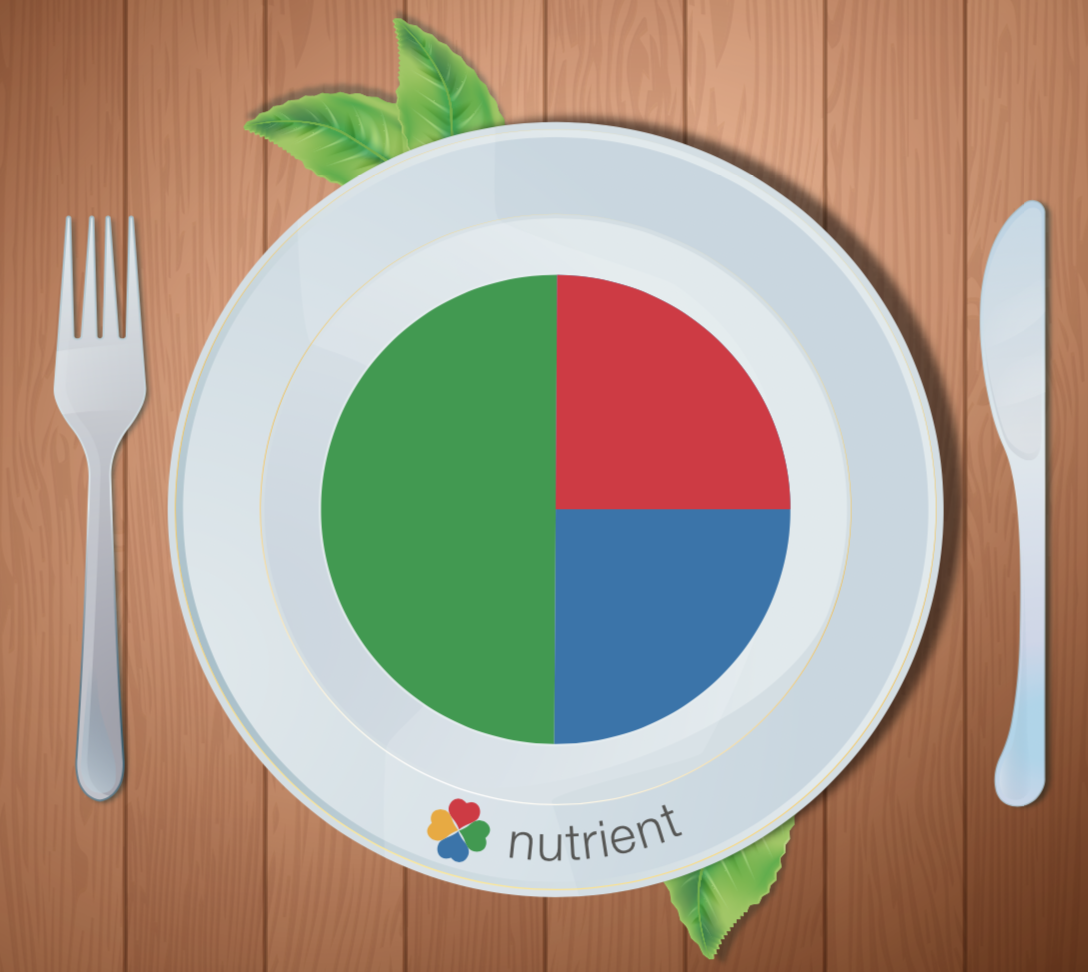50% di verdure, preferibilmente crude o cotte al vapore
25% di carboidrati (ad es. cereali integrali, preferibilmente di grani antichi o di natura senza glutine come miglio, riso integrale, amaranto, grano saraceno)
25% di alimenti ricchi di proteine come legumi, fagioli, piselli, ceci, lenticchie, soia, pesce (max 2-3 volte alla settimana) o uova (1 ogni 2 settimane). La quantità totale di proteine contenuta nel piatto non deve superare l’8% del pasto nel suo complesso.
Le proporzioni di cibo che sono state indicate nel piatto equilibrato nutrient NON dovrebbero essere applicate in casi speciali come bambini, giovani, donne incinte o che allattano, per anziani o persone con particolari malattie.
Consultare un medico con relativa specializzazione (pediatra, ginecologo, geriatra o altri) che può determinare le vostre esigenze mediche individuali e, se necessario, prescrivere integratori alimentari;
È importante che le persone siano accompagnate da un medico in grado di rilevare eventuali carenze attraverso esami mirati.
FR, DE, EN:
FR:
50% de légumes, de préférence crus ou cuits à la vapeur
25 % de glucides (p. ex. grains entiers, de préférence de grains anciens ou par nature sans gluten comme le millet, le riz entier, l’amarante, le sarrasin)
25 % des aliments riches en protéines comme les légumineuses, les haricots, les pois chiches, les lentilles, le soja, le poisson (max 2 à 3 fois par semaine) ou les œufs (1 toutes les 2 semaines). La quantité totale de protéines contenue dans l’asiette ne doit pas dépasser 8 % de l’ensemble du repas.
Les proportions d’aliments qui ont été indiquées dans le plat equilibré nutrient ne doivent PAS être appliquées dans des cas particuliers tels que les enfants, les jeunes, les femmes enceintes ou allaitantes, les personnes âgées ou les personnes atteintes de maladies particulières.
Consultez un médecin spécialisé (pédiatre, gynécologue, gériatre ou autre) qui peut déterminer vos besoins médicaux individuels et, si nécessaire, vous prescrire des compléments alimentaires
Il est important que les personnes soient accompagnées d’un médecin capable de détecter toute carence par des examens ciblés.
DE:
50% Gemüse, vorzugsweise roh oder gedampft
25% Kohlenhydrate (z.B. Vollkorn, vorzugsweise von alten Körnern oder von Natur aus glutenfrei wie Hirse, Vollreis, Amaranth, Buchweizen)
25% der proteinreichen Lebensmittel wie Hülsenfrüchte, Bohnen, Erbsen, Kichererbsen, Linsen, Soja, Fisch (max. 2-3 mal pro Woche) oder Eier (1 alle 2 Wochen). Die Gesamtproteinmenge im ganzen Teller darf 8% der gesamten Mahlzeit nicht überschreiten.
Die in den ausgewogenen Gericht nutrient angegebenen Nahrungsanteile sollten NICHT in Sonderfällen wie Kindern, Jugendlichen, Schwangeren oder stillenden Frauen, bei älteren Menschen oder Menschen mit besonderen Krankheiten angewendet werden.
Konsultieren Sie einen Arzt mit entsprechender Spezialisierung (Kinderarzt, Gynäkologe, Geriater oder andere), der Ihren individuellen medizinischen Bedarf ermitteln und gegebenenfalls Nahrungsergänzungsmittel verschreiben kann;
Es ist wichtig, dass die Menschen von einem Arzt begleitet werden, der in der Lage ist, eventuelle Mängel durch gezielte Untersuchungen zu erkennen.
EN:
50% vegetables, preferably raw or steamed
25% carbohydrates (e.g. whole grains, preferably gluten-free such as millet, whole rice, amaranth, buckwheat)
25% of protein-rich foods such as pulses, beans, peas, chickpeas, lentils, soybeans, fish (max. 2-3 times a week) or eggs (1 every 2 weeks). The total amount of protein in the whole dish must not exceed 8% of the total meal.
The proportions of food that have been indicated in the balanced meal nutrient should NOT be applied in special cases such as children, youths, pregnant or breastfeeding woman, for elders or people with particular diseases.
Consult a doctor with relative specialization (pediatrician, gynecologist, geriatrician or others) who can determine your individual medical needs and, if necessary, prescribe dietary supplements;
It is important that people need to be followed by a doctor who is able to detect any deficiencies through targeted examinations.

